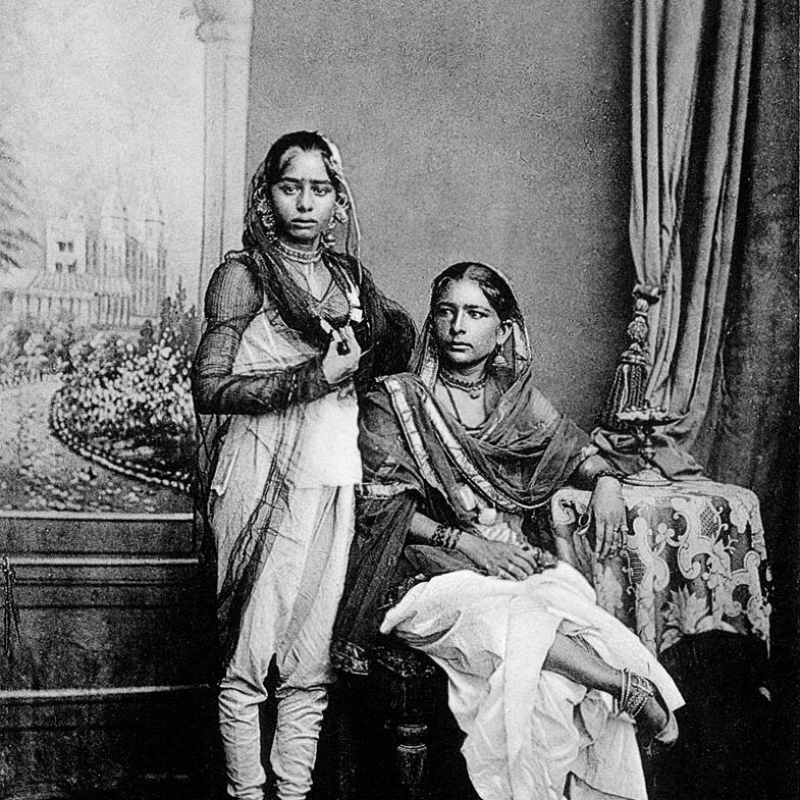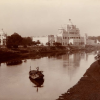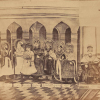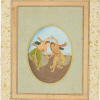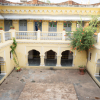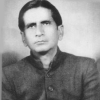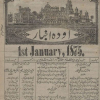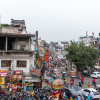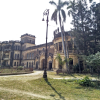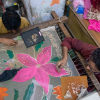Lucknow’s blend of Nawabi grandeur and Awadhi elegance, its stunning monuments and bustling bazaars have long fascinated Indian cinema, continuing to inspire filmmakers today. Who would not remember watching Meena Kumari in Pakeezah (1972) and Rekha in Umrao Jaan (1981) performing the marvellous Kathak sequences, highlighting the elegance and grace of Lucknow’s traditional performing arts!
Early Depictions
The movie Chaudhvin Ka Chand (1960), directed by Mohammed Sadiq and produced by Guru Dutt, is considered a classic of Indian cinema and holds a special place for several reasons. Set in Lucknow, the film captures the essence of Lucknow’s Nawabi culture, showcasing its refined lifestyle—evident in its architecture, traditional attire, and the rich Urdu language. The song ‘Chaudhvin Ka Chand’ itself is iconic, with its ethereal, moonlit visuals highlighting the architectural beauty of Lucknow.
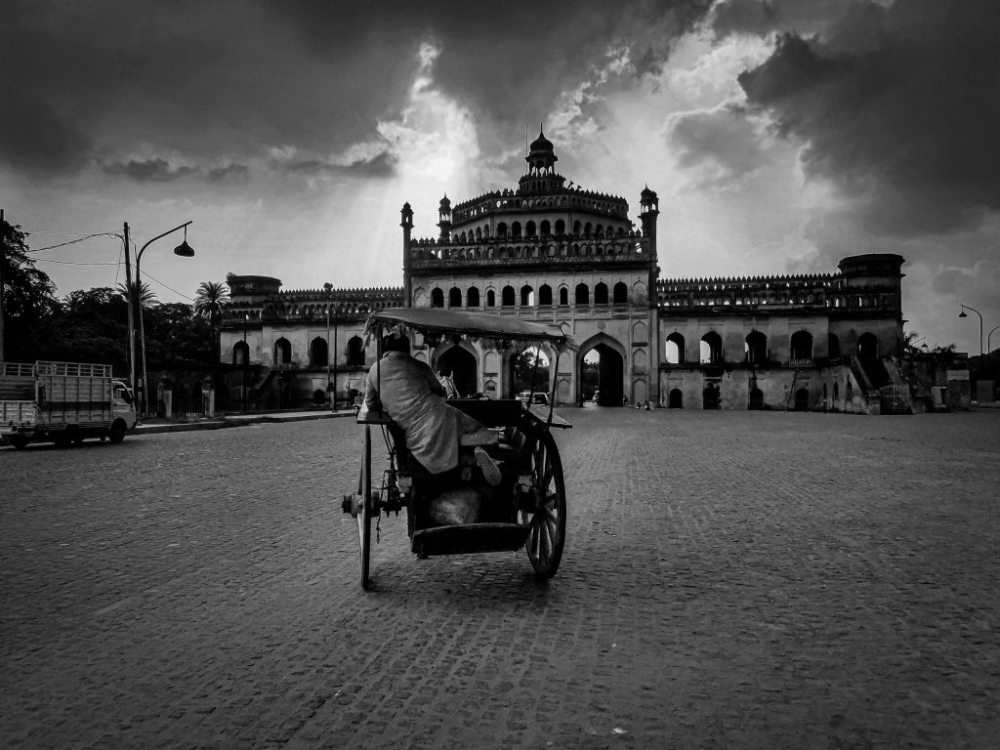
Rumi Darwaza. (Picture Credits: Syed Fahad/PixaHive)

Picture of Hussainabad Gate by Samuel Bourne, 1863, reflecting the glimpse of Lucknow streets in Hindi cinema. (Picture Credits: Wikimedia Commons)
Mere Mehboob (1963)—directed by H.S. Rawail and produced by S. S. Vasan—set against the backdrop of Lucknow’s timeless beauty, showcases key landmarks such as the Bara Imambara, Rumi Darwaza, and the city’s historic havelis, bringing to life the opulence and cultural depth of Lucknow. The period-appropriate costumes and set design evoke the Nawabi era’s elegance, while the film itself cemented Lucknow’s image as a setting of romance and nostalgia in Bollywood.
Rafiq Rizvi directed Palki (1967) beautifully showcases the city’s iconic landmarks, including the Bara Imambara, Rumi Darwaza and the baghs (gardens) that characterise the city’s landscape. The film also stands out for its detailed depiction of Lucknow’s socio-cultural milieu during the 1960s, captured in its set design, costumes and dialogue.
In Mere Huzoor (1968), directed by Vinod Kumar and featuring Raj Kumar, Mala Sinha and Jeetendra, leisurely lifestyle, the love for poetry, music and fine arts, and a deep sense of pride in the cultural heritage of Lucknow’s aristocracy take centre stage. The film portrays historic havelis (mansions), intricate jali-work windows and expansive courtyards vividly recreating the poetic and artistic spirit of the city. The film’s sets recreate the opulent interiors of Nawabi palaces, with ornate furniture, chandeliers and rich tapestries, all contributing to an authentic depiction of the era. Urdu poetry is central to the film, reflecting Lucknow’s longstanding literary traditions, while Kathak dance sequences and mushairas (poetry recitations) celebrate the city’s performing arts heritage. The costumes in the movie are reflective of the traditional attire of Lucknow’s nobility—with the men in sherwanis and achkans, and the women in gharara and sharara, dresses with intricate embroidery, echoing the context.
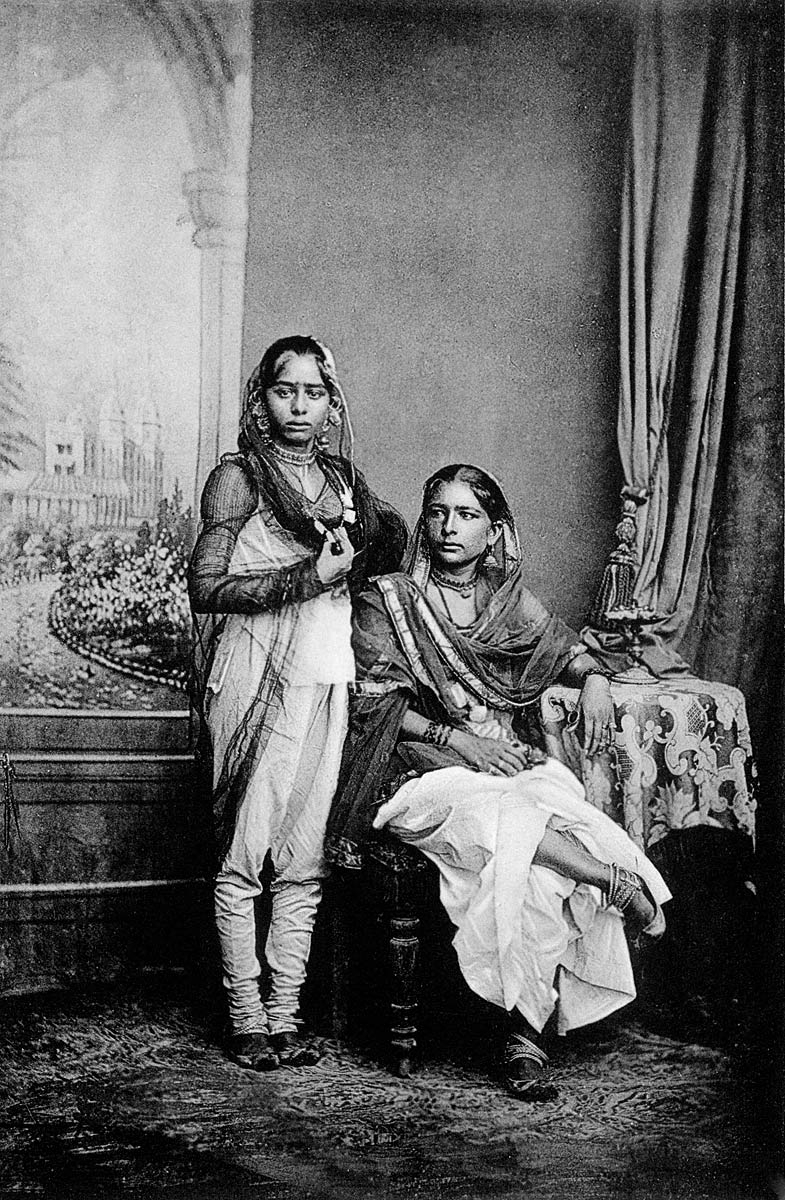
These two dancing girls are likely from Lucknow, suggested by the painting of Chattar Manzil in the studio background, 1905. (Picture Credits: Johnston & Hoffmann/Wikimedia Commons)
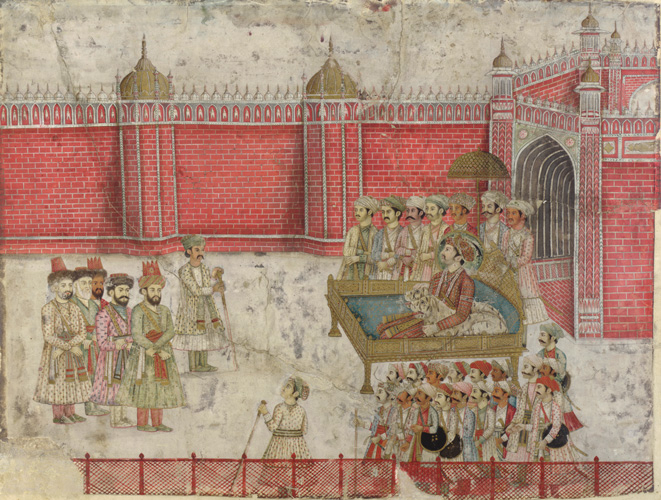
A Nawab of Awadh. 19th century. Color and gold on paper. (Picture Credits: Wikimedia Commons)
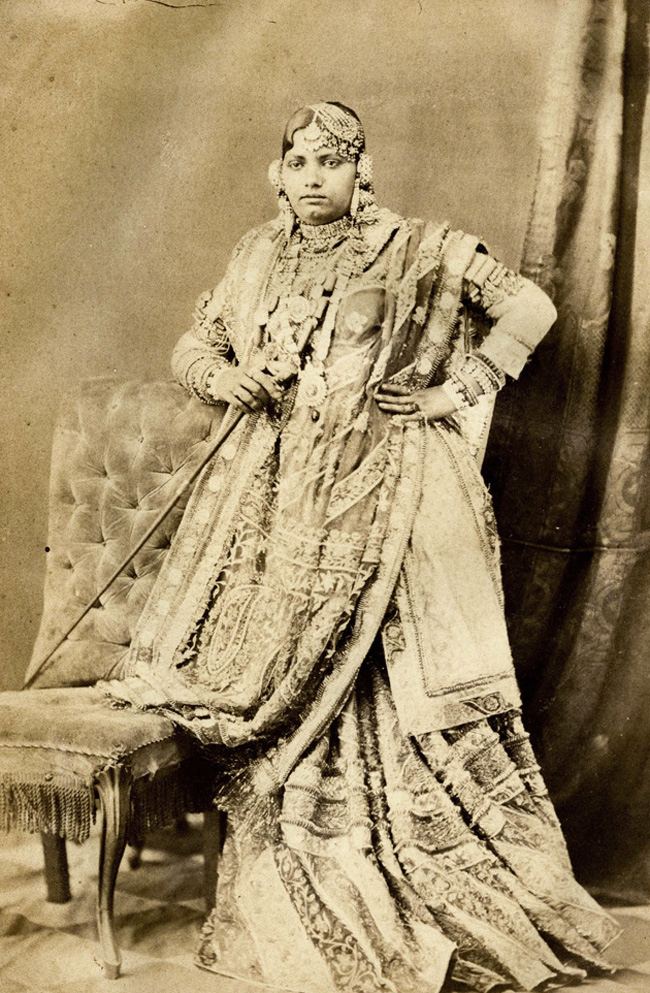
Portrait of a girl in traditional Lucknowi attire from the 1874 album Beauties of Lucknow, reminiscent of depictions in films like Pakeezah and Umrao Jaan. (Picture Credits: Darogah Abbas Ali/Wikimedia Commons)
Considered one of the classics, Pakeezah directed by Kamal Amrohi, is renowned for its evocative depiction of Lucknow’s cultural and historical milieu. The film stars Meena Kumari, Ashok Kumar and Raaj Kumar, telling the poignant story of a courtesan named Sahibjaan who grapples with her tragic past and searches for true love. Courtesans were a significant part of Lucknow’s social fabric during the Nawabi era. The film provides a nuanced view of the life, social status and artistic contributions of courtesans, highlighting their role in the cultural and social spheres of the city. The film’s elaborate set design, featuring ornate interiors and majestic settings, is a tribute to the architectural splendour of Lucknow. The music in Pakeezah includes classical compositions and traditional ghazals while also incorporating Kathak, both an integral part of Lucknow’s courtesan culture. The film’s costume design, featuring exquisite sarees, jewellery and traditional attire made with intricate embroidery and luxurious fabrics showcases traditional Lucknowi fashion of the period.
Satyajit Ray adapted one of Munshi Premchand’s short story in his historical drama Shatranj Ke Khilari (1977) set in 1856 Lucknow. The film focuses on two noblemen who are so obsessed with playing chess that they remain oblivious to the political turmoil surrounding them. The film provides a satirical yet poignant commentary on the decline of the Nawabi era in Lucknow. The city’s culture, characterised by leisure, poetry and indulgence, is depicted in contrast to the looming British takeover.
Lucknow’s image is often filtered through a romantic lens, emphasising its aristocratic past and the idealised concept of tehzeeb (etiquette). Junoon (1978) directed by Shyam Benegal, is a period drama set in the backdrop of the Rebellion of 1857, focusing on the Nawabi culture of Lucknow. The film stars Shashi Kapoor, Nafisa Ali and Heena Kausar. The detailed representation of traditional ceremonies, rituals and domestic life highlights the cultural richness of the Nawabi era. The film incorporates classical music and dance, emphasising the role of art in the lives of the Nawabi elite during the changing political landscape.
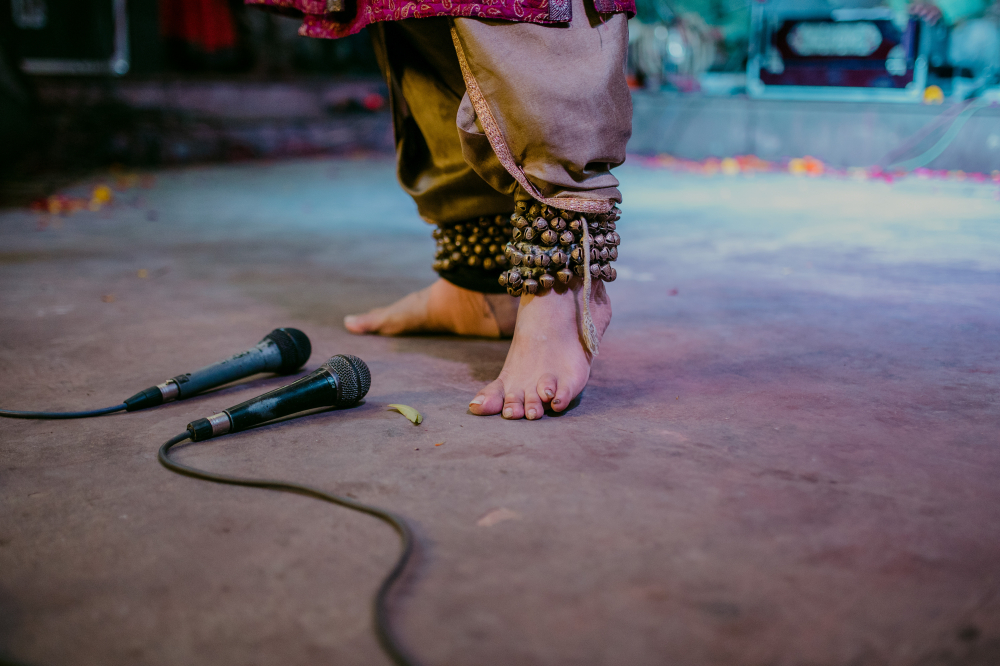
Artist wearing ghungroo for kathak performance. (Picture Credits: Monis Khan)
Umrao Jaan (1981), based on the Urdu novel Umrao Jaan Ada (1899) by Mirza Hadi Ruswa, was directed by Muzaffar Ali. The film provides a poignant depiction of the life of a courtesan and life in a kotha, a space where art, commerce and societal expectations intertwined. The film sheds light on the cultural intricacies and societal structures of the time. It showcases Kathak, particularly from the Lucknow gharana. The film’s use of Urdu poetry highlights the city’s rich tradition of literature and its significance in Lucknow’s social life. The film’s costume and set design are meticulous in their representation of nineteenth-century Lucknow.
A landmark film in Bollywood, Nikaah (1982) revolves around complex relationships and societal norms. Its depiction of Lucknow’s societal structure and traditional values offers a close-up look at the city’s social fabric.
Modern Films
The first half of the predominantly Partition film Gadar: Ek Prem Katha (2001) is set in pre-Partition Lucknow where different communities coexist peacefully. The film showcases Lucknow’s old-world charm, its markets and traditional architecture, providing a nostalgic glimpse into the city’s past before the tragedy of Partition.
Anwar (2007) explores the themes of love, identity and societal conflicts using Lucknow’s historical and cultural backdrop. The city’s old quarters, mosques and local life play a crucial role in setting the mood of the film, reflecting the conflict between tradition and modernity.
Dedh Ishqiya (2014), directed by Abhishek Chaubey and produced by Vishal Bhardwaj, is a significant film in Indian cinema for several reasons, especially in the way it portrays the city of Lucknow and its cultural heritage, including the sophisticated adab (decorum), tehzeeb and the genteel lifestyle associated with the city. With the use of Urdu poetry, traditional mushairas and the depiction of Lucknow’s historic architecture, including old havelis and bazaars, Dedh Ishqiya can be seen as a revival of a genre, a once-popular category in Indian cinema that focused on the life and culture of Muslim aristocracy, particularly in cities like Lucknow.
Jolly LLB 2 (2017) is a courtroom drama showcasing the city’s blend of old and new. The film’s portrayal of local courts, the bustling streets and the vernacular flavour of Lucknow adds authenticity and depth to the story. The city’s legal fraternity, its public spaces and local culture of Lucknow not just become a backdrop but characters in the narrative.
Directed by Shoojit Sircar and released in 2020, Gulabo Sitabo is a film that delves into the everyday life of Lucknow’s residents. The movie, starring Amitabh Bachchan and Ayushmann Khurrana, presents a unique blend of comedy and drama while offering a vivid portrayal of the city’s cultural and social landscape. The film’s use of the Awadhi dialect and local idioms adds authenticity to the portrayal of Lucknow’s linguistic and cultural identity. The movie portrays the social dynamics of Lucknow, particularly the class differences and the relationships between various social strata, captured in the interactions between the rich landlord, Mirza (played by Amitabh Bachchan), and his tenants, including the protagonist Baankey (played by Ayushmann Khurrana). The depiction of local markets, street scenes and daily routines offers a snapshot of the city’s vibrant life and its blend of old-world charm with modern realities. Gulabo Sitabo prominently features the traditional architecture of Lucknow, including the old havelis in the Qaiserbagh area and historic buildings that are central to the story. The crumbling haveli where much of the action takes place is not just a setting but a character, reflecting the city’s colonial past and its enduring grandeur. The film’s title itself is derived from the traditional puppet characters Gulabo and Sitabo, which are part of Lucknow’s folk culture.
If Not the Plot, Then the Presence
Mughal-e-Azam (1960) directed by K. Asif, although not set in Lucknow, features Kathak in a way that reflects the broader cultural influence that Lucknow had on classical arts. The iconic dance sequence ‘Pyar Kiya To Darna Kya’, performed by Madhubala as Anarkali, has immortalised the intricate footwork, spins and expressive gestures characteristic of the dance form, reflecting the grandeur and cultural richness associated with Kathak, much like it is revered in Lucknow.
Many films, such as Ishaqzaade (2012), utilise Lucknow as a setting to lend authenticity and a gritty realism to their narratives. The city’s blend of historical grandeur and lived-in urban spaces provides their stories backdrops of complex social dynamics and power struggles. For instance, Daawat-e-Ishq (2014) effectively used Lucknow’s food culture and traditional architecture to ground its romantic comedy in a specific cultural context. Similarly, films like Youngistaan (2014) and Raees (2017) included scenes filmed in Lucknow to add a layer of political and social realism to their storylines, leveraging the city’s unique atmosphere to enhance their narratives.
This essay has been created as part of Sahapedia's My City My Heritage project, supported by the InterGlobe Foundation (IGF).
